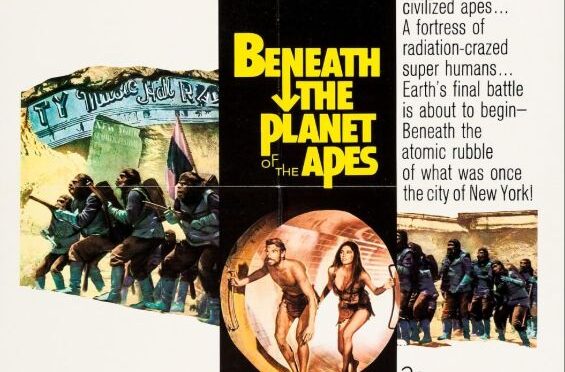
by Jason Sacks
Before you start reading this essay, let me warn you: I will be discussing major plot details from the latest Hollywood blockbuster, Beneath the Planet of the Apes. This will include the movie’s conclusion. For that matter, this article also ruins the ending of the original film. So be warned in case you haven't yet been to your local multiplex to see these in double-feature. On the other hand, you may well wish to go in with your eyes wide open… because Beneath the Planet of the Apes is both a fascinating continuation and a jaw-dropping pivot.

When last my friends and I journeyed to the Planet of the Apes, we witnessed astronaut Taylor (played by the redoubtable Charlton Heston) howling about “you damn dirty apes” as he pounded sand at the foot of a destroyed Statue of Liberty. The new sequel to that instant classic takes a different turn – we get Taylor, and lots of apes, and, well, much more than we expected.
Thus, we all sojourned back to the Northgate Cinemas, ready to delve into the sequel of Planet of the Apes, expecting more philosophical musings about human nature through the lens of intelligent primates. We pictured apes in Romanesque armor, their spirited debates, and that haunting vision of a decaying human world. But wait a minute—what’s this we got along with the apes? Mutants? Telepathic, nuclear-bomb-worshipping mutants?
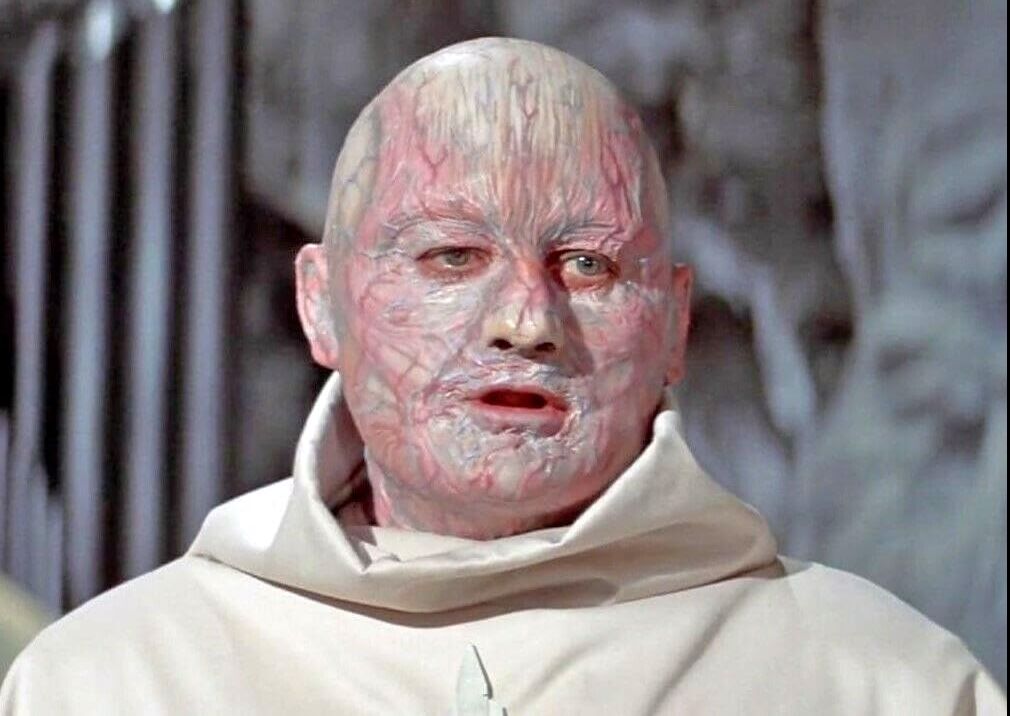
Yes, you heard that right. This 1970 sequel dives into a narrative far removed from the ape-centric drama of its predecessor. Strange, radiation-irradiated people are still alive on that wasteland planet, and they kind of take center stage over our beloved Cornelius and Zira.
The film starts innocently enough. Taylor (Charlton Heston), our rugged protagonist from the first film, has disappeared into the Forbidden Zone with Nova, his mute human companion. All seems normal in this post-apocalyptic ape-ruled world – even when Taylor seems to disappear into a solid rock when walking around the landscape, no sign of the Statue of Liberty in sight.
After Heston vanishes, we’re introduced to Brent, played by James Franciscus, an astronaut who happened to crash-land on the strange planet while on a mission to find Taylor. So far, so good—another human to navigate the ape society and unravel its secrets. Franciscus has a minor resemblance to Heston, so maybe, just maybe, we’re going to get a kind of rerun of the original.
But hold on. Something feels… off.
As Brent ventures into the Forbidden Zone, the film takes a surreal turn. The apes are in their local villages and debating war. Nasty old General Ursus is rallying for war against the heretical humans in the Forbidden Zone, and Dr. Zaius is still grumbling about humanity's destructive tendencies. Yet, the story starts steering us away from these familiar simian power struggles and plunges headlong into something much darker.
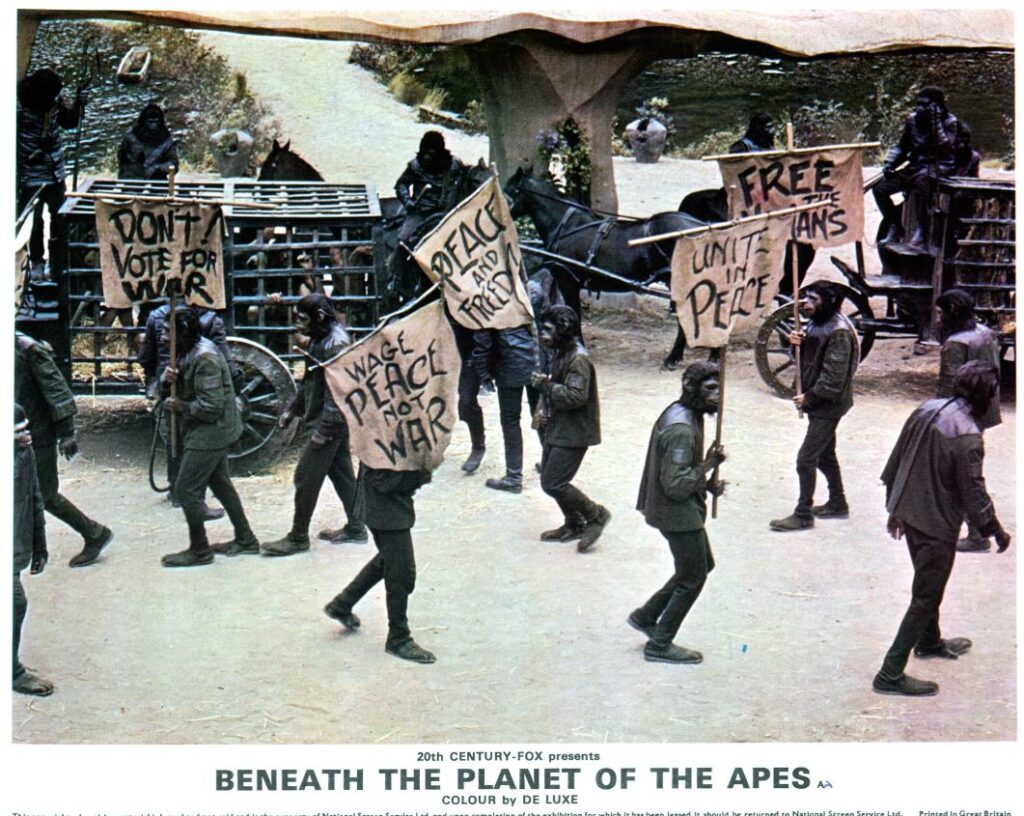
Here’s where the weirdness sets in. Beneath the surface of the Forbidden Zone lies a subterranean world of survivors. They are humans, yes, but not the kind of humans you’d expect. These people are mutants, grotesquely scarred from generations of radiation exposure. But that’s not even the shocking part. These mutants have developed telepathic powers, allowing them to communicate without speaking and even manipulate the minds of others.
Creepy? Absolutely.
These mutants live inside the ruins of the New York Subway system. We don't see the ruins of the Statue of Liberty, but we do see destroyed versions of Grand Central Station, the New York Stock Exchange and the New York Public Library. We had to give the filmmakers credit for keeping the film centered in New York and for the impressive sets, but we, the viewers, were also getting impatient. When would we go back to the apes on a rampage?
But wait, it gets weirder.
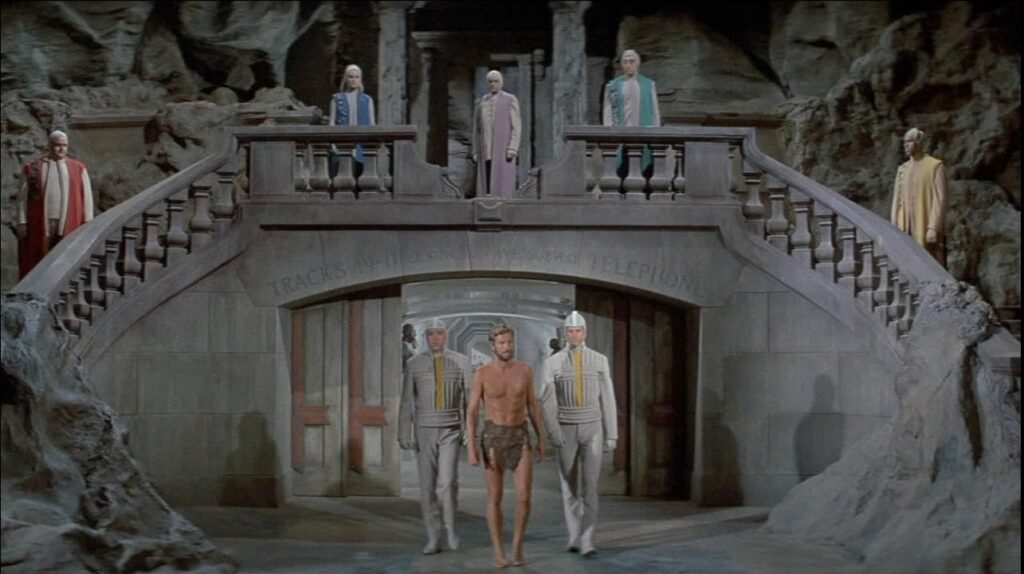
The mutants worship a doomsday weapon. Their deity is the Alpha-Omega Bomb, an old nuclear missile they’ve preserved and venerated like a god (and which they somehow either transported to New York or found there—I’m not sure which is scarier).
And when I say worship, I mean full-on religious rituals, hymns, and the works. It’s as if Stanley Kubrick’s Dr. Strangelove took a detour into the Planet of the Apes franchise. This plot twist is so left-field that you can’t help but ask: is this movie series still about those damn dirty apes?
Because you'd expect apes to be the stars here, given the franchise’s title. After all, the first film introduced us to a world dominated by intelligent apes with a rigid caste system: the militaristic gorillas, the scholarly orangutans, and the compassionate chimpanzees. Their society was a brilliant mirror held up to humanity’s own flaws. But in Beneath the Planet of the Apes, the apes feel more like supporting characters to the mutant storyline.
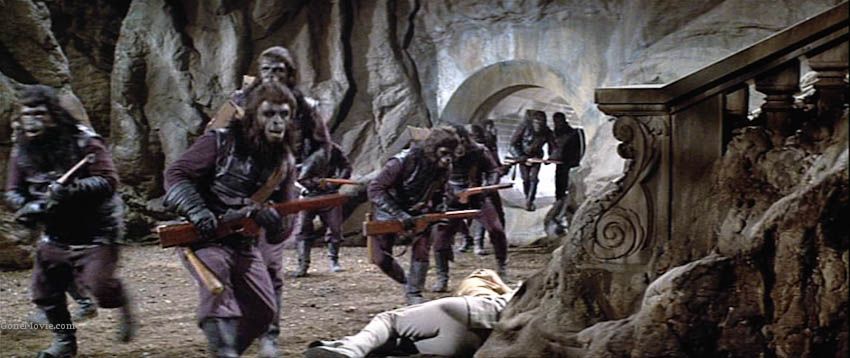
When we do finally get back to the primates, General Ursus is leading an aggressive campaign into the Forbidden Zone. At least his motivations are fairly straightforward—he wants conquest, and he fears what he doesn’t understand. Dr. Zaius, always a voice of cautious wisdom, tries to temper Ursus' bloodlust, but even his role feels muted compared to the grandeur of the first film. It’s as if the apes are here to remind us we’re still in their world. But the spotlight has shifted to the menace lurking beneath.
Why mutants? Why a nuclear bomb? I still scratch my head on that question. Why take such a dramatic swerve against fans’ expectations, and what was served by going under the planet, anyway?
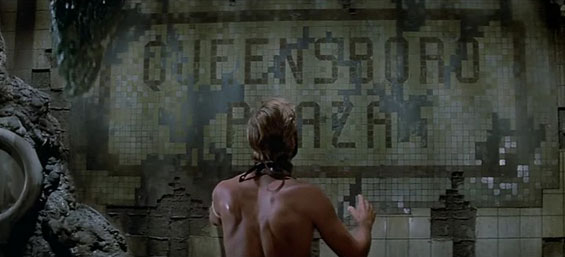
On closer inspection, it seems Beneath the Planet of the Apes uses these shocking elements to further explore the themes of humanity’s self-destructive tendencies. The mutants are a haunting representation of what humans could become—physically deformed, morally compromised, and so warped by their reverence for power that they literally worship a weapon of mass destruction.
The mutants’ telepathic abilities, though fascinating, make them unsettling antagonists. They manipulate Brent and Nova in cruel ways, forcing us to question whether their survival justifies their methods. And their blind devotion to the Alpha-Omega Bomb? That’s a chilling reminder of humanity’s capacity to create and idolize tools of its own annihilation.

Finally Heston reappears in the film. He delivers a jolt of energy when we see him again, and my friends and I reveled in the charisma ol’ Charlie brought to the screen. He wakes up from a trance just in time to help lead a gun-toting battle in which Beneath momentarily gets good.
That is, until the ending.
Ah, the ending. If the mutant storyline wasn’t shocking enough, the conclusion of Beneath the Planet of the Apes is nothing short of apocalyptic. The conflict escalates, and Taylor’s violence leads to catastrophe. The Alpha-Omega Bomb, the very symbol of humanity’s destruction, becomes the centerpiece of a finale that leaves you reeling. It’s a bold move for a sequel, one that leaves you questioning what’s next for the franchise—or if there even can be a “next.”

Beneath the Planet of the Apes is one of the stranger, most head-scratching films of 1970 so far – and this has been an odd year for American films. 20th Century Fox had a perfect setup for a long series of Apes sequels, but they seem to have thrown that idea away in a fit of nihilism.
At least we’ll always have the Statue of Liberty.
Two stars.
[New to the Journey? Read this for a brief introduction!]

